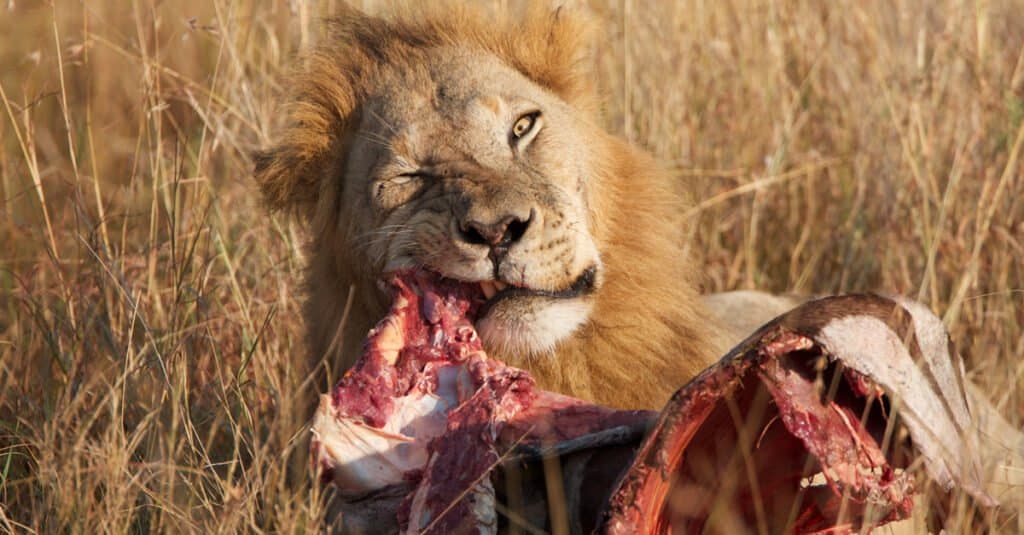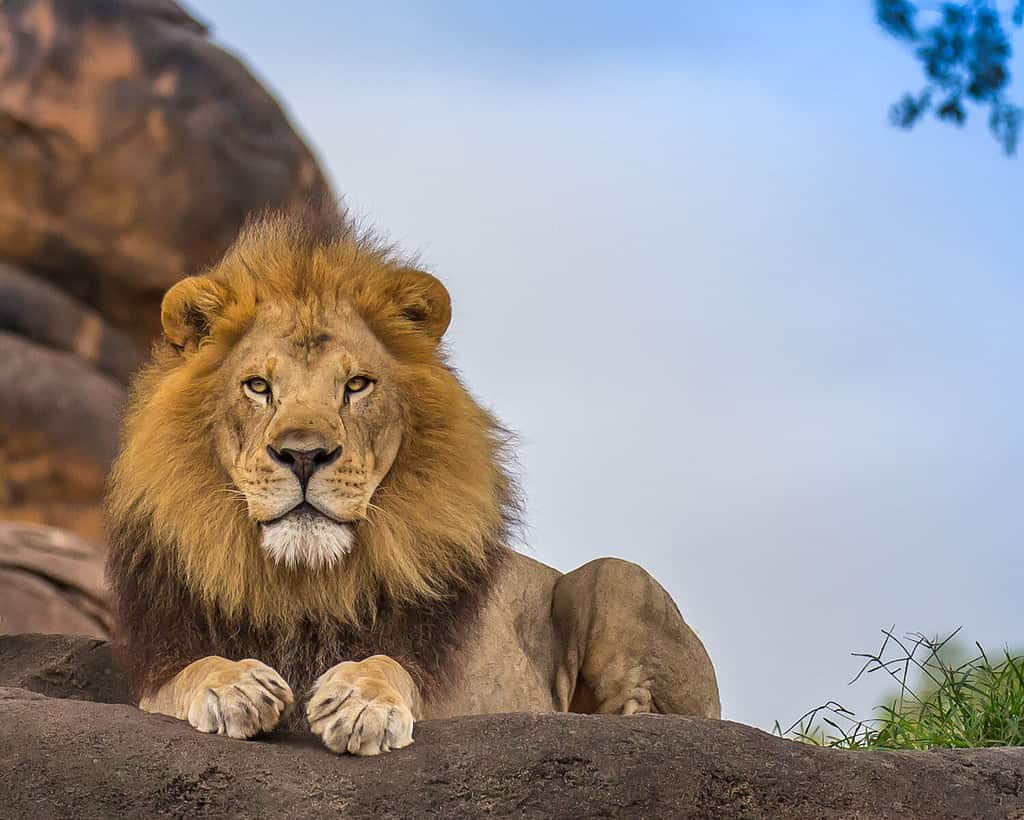The sheer strength and hunting prowess of lions make them apex predators that even animals as large as wildebeest and buffalos fall prey to. They’re adept when hunting, knowing how to hide in the brush, keeping their presence unknown until it’s too late for the animal they’re after. In this clip, you watch as a pride of lions enjoys their kill together as if they are all seated around a table for supper.
Watch the Action-Packed Video Below:

Watch this lion pride feasting on a kill with a male lion at the head of the table.
©Alex Staniloff/Shutterstock.com
How Do Lions Hunt?

©Richard Damian Knight/Shutterstock.com
Lions hunt in two main ways. Female lions, also known as lionesses, generally take on the responsibility of hunting. They band together in prides as they head out to find and kill their prey. Not only does their strength in numbers work for them, but they’re also smaller, more agile, and faster than their lion counterparts.
When female lions are hunting, they stalk their prey. They are very still and quiet and work to surround the animal they’re hunting. Eventually, as they inch closer, the prey animal notices them stalking. Once the prey animal starts running, the lionesses follow in close pursuit.
When they reach their prey, they use their claws along with their canine teeth and powerful jaws to attack and immobilize the animal. They work together to crush their necks as they tear through flesh and bone to feast. The other method that lions employ is more basic.
In these scenarios, the male lion joins in and works with the female lions to corner a prey animal. The lion battles it out with the prey animal, and the lionesses take on supporting roles and watch as the male lion uses its physical strength.
What Do Lions Normally Eat?

A lion will eat any meat it can get its paws on.
©nwdph/Shutterstock.com
Lions eat meat. They prey on different animals, including wild dogs, hippos, birds, giraffes, leopards, buffalos, antelopes, and even baby elephants! They don’t necessarily have a preference for a specific type of animal to feed on — instead, they prey on any animal they can overtake.
They’re opportunistic. If they can effectively hunt and kill an animal, it becomes prey to them. In this clip, you get an amazing aerial view from a drone directly above a lion pride feasting together. There are 18 lions scattered around a dead animal — and at this point, it’s unclear what it could have been.
They’re all lying close to the kill, relaxed as if they’ve just devoured a family feast during the holidays. Some of the lions have crimson-painted faces, blood still dripping from their chins. They seem relaxed and satiated as the drone keeps pulling out of view.
As the video loops and you get a close-up view again, you can spot the male lion as if at the head of the table and a few younger lions also feasting along with the primary hunters, the lionesses. It’s an extraordinary perspective that only a drone can deliver!
How Big Are Lions?

A large male lion can weigh up to 550 pounds!
©Jrossphoto/Shutterstock.com
Lions are impressively large cats. Adult males typically weigh between 330 and 550 pounds, while females weigh between 250 and 400 pounds. They can reach heights of up to 4 feet at the shoulder and lengths of up to 9 feet from head to tail. Their paw size can reach up to 6 inches in diameter, and their teeth can be up to 2.5 inches long.
Variations in size exist between different types of lions, with baby cubs typically weighing between 2 and 6 pounds at birth and measuring up to 11 inches long. African lions are the largest species, reaching up to 550 pounds in weight, whereas Asiatic lions tend to be slightly smaller, reaching a maximum weight of 420 pounds. Lions are some of the most awe-inspiring creatures in the world due to their size, which allows them to survive and thrive in the wild.
The photo featured at the top of this post is © Nejron Photo/Shutterstock.com
Thank you for reading! Have some feedback for us? Contact the AZ Animals editorial team.






